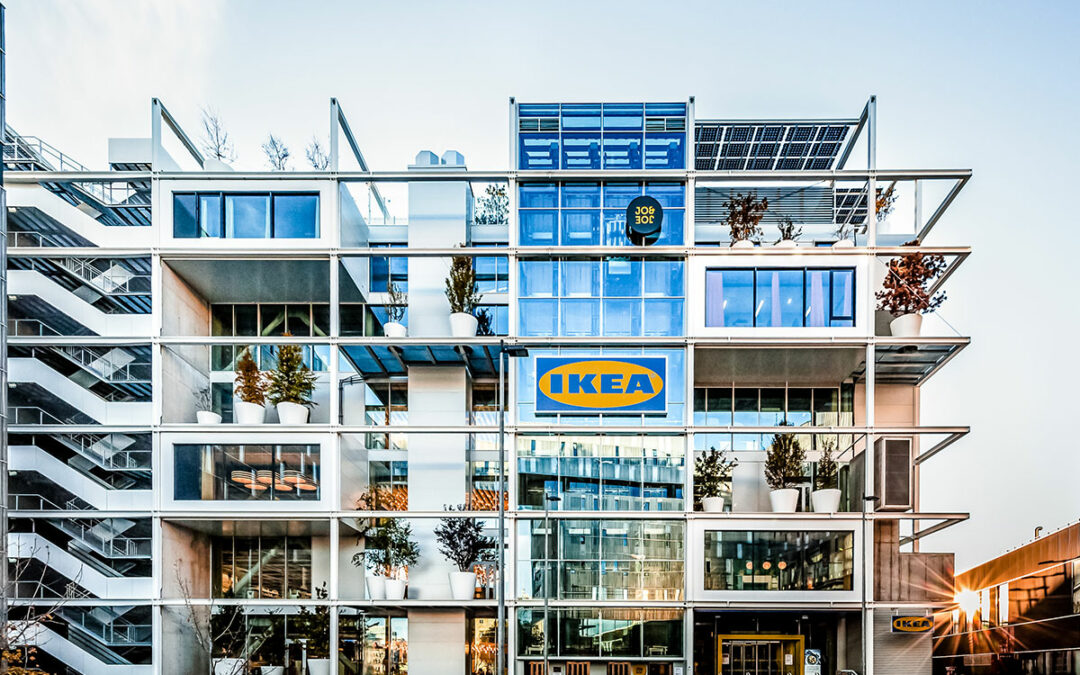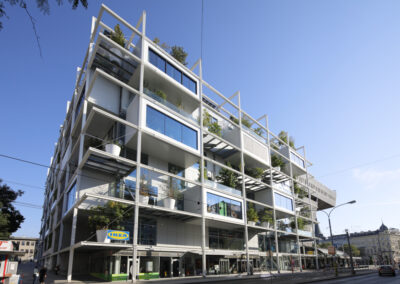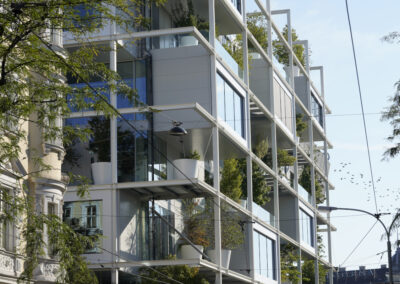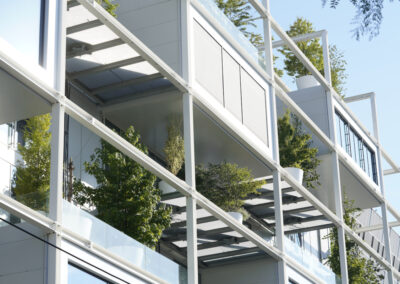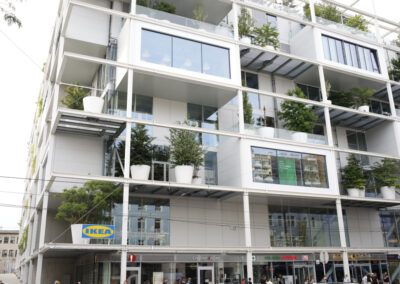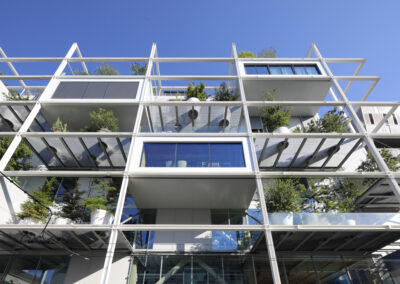In a world increasingly aware of the importance of sustainability and environmental protection, we are delighted to contribute significantly to this cause. We take pride in having installed the innovative irrigation system at the new IKEA Westbahnhof in Vienna. This project not only embodies our expertise in advanced irrigation systems but also demonstrates our commitment to a greener, more sustainable future.
A Closer Look at the Project’s Core
The IKEA Westbahnhof building is distinguished by its unique facade and roof greening, inspired by Swedish forests and national parks. With a total of 160 trees and shrubs on all four sides of the facade and the roof, the building provides not just a visual highlight but also significantly improves the microclimate in the vicinity. On hot days, it can reduce the neighborhood’s temperature by up to 1.5°C, contributing to its earning the “Greenpass” Platinum certification.
The Role of Our Irrigation System
The longevity and flourishing of this extensive greening heavily rely on the efficiency and sustainability of the irrigation system employed. Here, our expertise shines. Raintime has developed a customized irrigation system perfectly tailored to the diverse plant species’ needs and the specific demands of the urban environment. Our system ensures optimal water supply, with each tree and shrub receiving precisely the right amount of water needed. This not only conserves water but also ensures ideal plant growth.
The Technology Behind the Irrigation
Our irrigation system at IKEA Westbahnhof is technically sophisticated, consisting of various components:
- Irrigation system control centers with controllers, water distributors & solenoid valves, drain technology (using compressed air), and sensor technology (wireless reception).
- Irrigation sections or circuits comprising the pipeline network, water distribution at plants, sensor technology (wireless transmitters for soil moisture and temperature), and drainage systems.
The irrigation system is divided into small subsections, known as irrigation circles or sections. Each irrigation circle supplies a group of plants. The water supply can be adjusted to the needs of the plant group through the control unit, for example, by providing longer watering for trees in the sun and shorter watering for plants in the shade.
In practice, this is achieved by activating “electric taps,” namely solenoid valves. These are connected to water distributors in the two technical rooms. When a solenoid valve is turned on, water flows through pipes under the terrace tiles of the roof and balconies, over the facades to pots and troughs. A drip hose connected there ensures an even distribution of water. This occurs slowly, allowing the plant substrate ample time to absorb the water effectively.
The irrigation system is very large. To still water according to needs, there is a…
Sophisticated Sensor Technology
Each irrigation section has one or two soil moisture sensors, which protrude into the soil in selected pots. These sensors are connected to a battery-powered transmitting unit with a cable. Within this transmitter, there is also a temperature sensor. The measured temperature and moisture values are sent out at regular intervals via radio signal. Antennas on the roof of the technical rooms receive these signals and transfer them to the control system. There, the data are processed and continuously influence the current watering program, ensuring that each plant group is individually and optimally watered.
Excess water that emerges from the plant containers is captured and specifically removed by the drainage technology, keeping facades and pedestrians clean and dry. All plants, especially conifers, wintergreens, and evergreens, need water even in winter. For this purpose, there is a winter irrigation system. It prevents the plants from drying out due to frost. The drain technology enables this winter operation by using compressed air to empty the system. This ensures that all pipes are free of water as soon as frost is imminent, thereby preventing damage to the pipes. In total, there are 47 sections distributed in all four cardinal directions.
Control Units
For the “IKEA Westbahnhof V3” irrigation system, two control units were installed. They are interconnected and complement each other in their winter operation functions. Irrigation control units come in a variety of forms. The controls for this system are custom-made, specifically designed for the unique conditions of the building’s greenery.
Function
In general, the amount of water distributed is regulated by the duration of watering. The longer it waters, the more water the plants receive.
Safety and Remote Control
The “IKEA Westbahnhof” irrigation controls also feature an interface for remote access, which is decoupled from the local IT network. Two industrial Wi-Fi routers with inserted data SIM cards enable access without creating an interface with the IKEA network, thus providing additional security against hacking attacks.
Raintime: Innovation & Sustainability in Irrigation Technology
This project impressively illustrates how innovative irrigation technology and sustainable design can go hand in hand. As pioneers in sustainable irrigation solutions, we are proud to have contributed to creating a greener, more livable urban landscape. Our commitment to innovation and sustainability aligns with our aim to be at the forefront of developments in irrigation technology.
Raintime
We would be pleased to inform you about our innovative systems and advise you on individual solutions.
Raintime solutions for the climate challenges of our time
Raintime has specialized in implementing concepts and systems for sustainable and efficient cooling for 20 years now. Some of our reference projects are:
500 square meter water feature at Praterstern in Vienna
Raintime high pressure fog technology Air steles Calafatti Square, Vienna
GreenDIVAN in Vienna
Raintime fog technology at Expo 2020 Dubai
Installation Reversío auf der EDIT 2017 / Toronto

